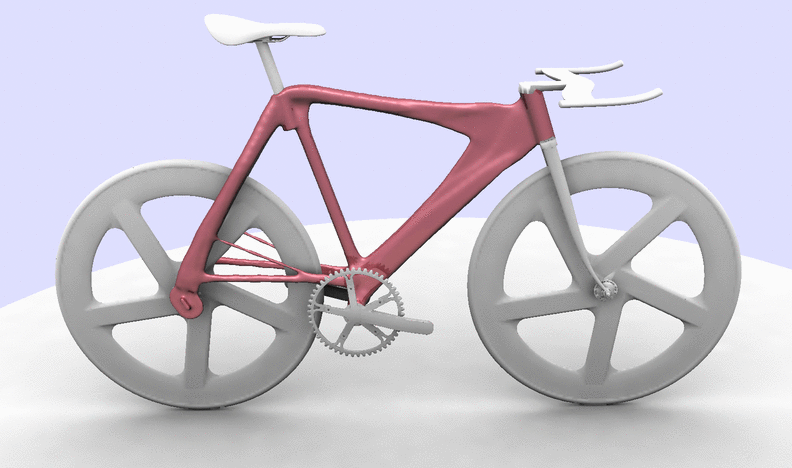“We become what we behold. We shape our tools and then our tools shape us.” – John Culkin (based on Marshall McLuhan’s ideas)
Something big is happening in design and engineering.
For all of human history, we have created tools that help us do what we want to do — faster, better, cheaper. But we have always had to direct those tools; tell them exactly what to do for us to achieve our goals. This hasn’t changed from the time of stone tools (which we had to wield with our hands) to modern digital design tools (which we wield with the click of the mouse).
If an architect designing a house wants to move a wall, she has to first imagine all the possible alternatives of that wall’s placement that will serve her design. Once she has parsed through the possibilities in her mind, she will make a decision and manually move that wall in her CAD drawing. Naturally, she can only imagine a certain number of possibilities, and many alternatives might be completely lost because she didn’t imagine them.
This is how we’ve been designing things for most of history: first, you have an idea in your mind, then you draw it. But in recent years a new era of design has been creeping into the picture: generative design.
A fews days ago, I heard Jeff Kowalski, CTO of Autodesk, give a great talk about generative design at the e.g. conference. He argued that generative design will evolve the roles of designers and engineers from direct operators, to curators and eventually, mentors.
Let’s dig into some of the ideas presented by Kowalski on how our roles as creators change with these emerging tools…
A New Era in Design
Generative design uses algorithms to explore entire solution sets. You state your goals and constraints and allow the computer to generate designs and iterations for you that you might never have thought of — a kind of accelerated artificial evolution, as some have called it.

As exciting as this new field of design is, it can also seem frightening. What happens to the role of designer when a computer program like Autodesk’s Dreamcatcher can generate hundreds of unique designs in hours—when it takes a human days or more just to create one iteration?
We are so often worried by the thought we might lose jobs to computers and robots that we fail to imagine how our changing roles and relationships to machines can change in a way that brings much greater creativity and freedom to humans.
Evolving From ‘Operator’ to ‘Curator’ to ‘Mentor’
No longer required to be the operator of the tool in generative design, the human being is freed to become the curator; choosing the best possible solution and working alongside the computer to co-create the most ideal design. Given various possibilities, we can now choose which design suits our needs the best in terms of structure, weight, shape, etc.

While the concept of generative design alone is fascinating, we live in a world of convergence, and the most incredible innovations stem from the combination of several emerging trends. For example, the marriage of machine learning and generative design opens a flood of new possibilities.
Generative design, even in its early stages, has seen some interesting successes already. But once the design process is complete, the program doesn’t store anything it has learned. Now, imagine that the generative design software learns with every design it creates based on the human designer or engineer’s feedback.
As Kowalski wrote in this article, “How many times have you ever talked about learning a new design tool? I think it’s about time there was a design tool that learned you!”
So what happens to the role of designer and engineer when the computer starts having opinions and making creative decisions based on what it has learned through experience and feedback?
Humans don’t get replaced when the machine begins to design creatively, instead we step into the newly evolved phase of the mentor.
Both generative design and machine learning require input from humans in the form of goals, values and parameters. Which goals and values do we want to see our machines achieve? What do we want them to create, once they are able to make creative decisions? Well, that’s still up to us.
We must decide whether we want to create a world of isolation or connectedness, a world of rigidity or fluidity, a world that is constructed or grown — as Jeff Kowalski argued in his talk.
The Evolution of Our Relationship With Machines (Beyond Design)
If you use gmail, you might have noticed there are suggested replies included that you can use to quickly reply to an email. Here are some I’ve seen recently in my emails: “I’m so glad you liked it,” “Thanks for sharing,” “Have a good trip,” “Yes, I got your email.”
Interestingly, when I use these computer-generated replies, I’m acting in the role of curator. However, the people who programmed this bot to auto-generate answers act as mentors. The reply options in gmail are polite, sweet, even — and that’s a reflection not only on the machine generating the messages but also on the people behind the scenes.
We will see many more examples of these new roles of curator and mentor in increasing domains in the years to come.
The big question stands: which goals and values will we choose to pass on to our machines?
Image Credit: Autodesk and Shutterstock



